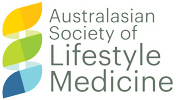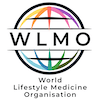
The Federal Budget and how it relates to the practice of Lifestyle Medicine
While there were little surprises announced at the 23-24 Federal Budget we will look at the main measures that provide opportunities for lifestyle medicine practitioners.
Increased bulk-billing rates
We are very pleased to see the details of measures aimed at increasing bulk billing rates to people who can least afford ongoing and regular presentations to their GP, including children under 16 and those with a concession card. As a result, this will allow effective ongoing engagement in early detection of health risk factors, for preventive care and management, including through lifestyle medicine, ($3.5 billion over 5 years for bulk-billing incentive).
Multidisciplinary care
Multidisciplinary care is the main theme of the Strengthening Medicare Taskforce and is repeatedly mentioned in the budget. There will be a 30% increase in Workforce Incentive Payment – Practice Stream, where practices can raise up to $130,000 to support the employment of allied health, nurses, and Aboriginal health practitioners. This injection will allow practices to further multidisciplinary care; an essential feature of the lifestyle medicine care model which places greater emphasis on evidence-based non-therapeutics in managing chronic disease and mental health presentations. Tools for lifestyle medicine practice such motivational interviewing and brief intervention, shared medical appointments, health and wellness coaching, shared GP management plans, health assessment and screening, lifestyle medicine prescriptions and social prescribing are made more likely with GPs and other health care professionals operating at the top of their scope, (445.1 million over five years).
Improved access to multidisciplinary care
Multidisciplinary care is the main theme of the Strengthening Medicare Taskforce and is repeatedly mentioned in the budget. There will be a 30% increase in Workforce Incentive Payment – Practice Stream, where practices can raise up to $130,000 to support the employment of allied health, nurses, and Aboriginal health practitioners. This injection will allow practices to further multidisciplinary care; an essential feature of the lifestyle medicine care model which places greater emphasis on evidence-based non-therapeutics in managing chronic disease and mental health presentations. Tools for lifestyle medicine practice such motivational interviewing and brief intervention, shared medical appointments, health and wellness coaching, shared GP management plans, health assessment and screening, lifestyle medicine prescriptions and social prescribing are made more likely with GPs and other health care professionals operating at the top of their scope, (445.1 million over five years).
Improved access to multidisciplinary care
Related to the above measures for multidisciplinary care, is the increase in Medicare rebates for nurse practitioners and the $79.4 million over 4 years to PHNs to commission allied health services to improve access to multidisciplinary care for people with chronic conditions in underserviced communities.
My Medicare
MyMedicare (voluntary patient enrolment) is endorsed by the Strengthening Medicare Taskforce to promote continuity of care of patients in GP practices. On paper the concept is useful for lifestyle medicine practice in providing wrap around care but there is not enough detail to make any other comments about this funding, ($19.7 million over 4 years and $3.2 per year thereafter).
Long consultation item level
The introduction of the long consultation item level E (over 60 minutes) will be a game changer to support patients with chronic and complex problems, ($99.1 million over 5 years).
Digital health improvements
Funding for digital health emphasis improvements in My Health Record and access for patients and their health care professionals. Access to reliable health data is a requirement for patient empowerment and self-care in chronic disease management, ($429 million to modernize MHR).
Improved primary care for Aboriginal and Torres Strait Islander people
We are pleased to see a series of measures to improve primary care access for Aboriginal and Torres Strait Islander people, including $16.7 million to promote health checks. ACCHS offer bulk-billing GP clinics and the budget measures to address the decline in bulk-billing in general practice will help boost ACCHS capacity to continue to deliver quality culturally safe team based primary care, ($363.1 million over 4 years).
Other budget commitments that have an impact on Lifestyle Medicine practice and policies include:
- The establishment of an Australian Centre of Disease Control, ($91.1 million over 2 years).
- Reducing harm from e-cigarettes and tobacco industry. This includes $141.2 million over 4 years for the Tackling Indigenous Smoking program extension to vaping, ($737 million).
- Place based partnerships to create healthier communities e.g., community sport programs, focusing on evidence-based policy, ($200 million).
- Australian Branded Food Database, Healthy Food Partnership and ongoing implementation of the Health Star Rating system, (3.2 million over 3 years).
- Aboriginal and Torres Strait Islander health, housing, education, employment, and culturally significant environments. This includes mental health support during and after the referendum for the Voice, (total close to $2 billion) https://nit.com.au/09-05-2023/5900/almost-2-billion-for-first-nations-in-federal-budget
We are pleased to finally see a positive move with the most promising budget for the environment in a decade, including provision for the establishment of the Net Zero Authority. We would refer members to https://www.aegn.org.au/federal-budget-2022-23/ for a more detailed discussion on the budget and the environment.
This article was prepared by ASLM President Dr Hung The Nguyen.



